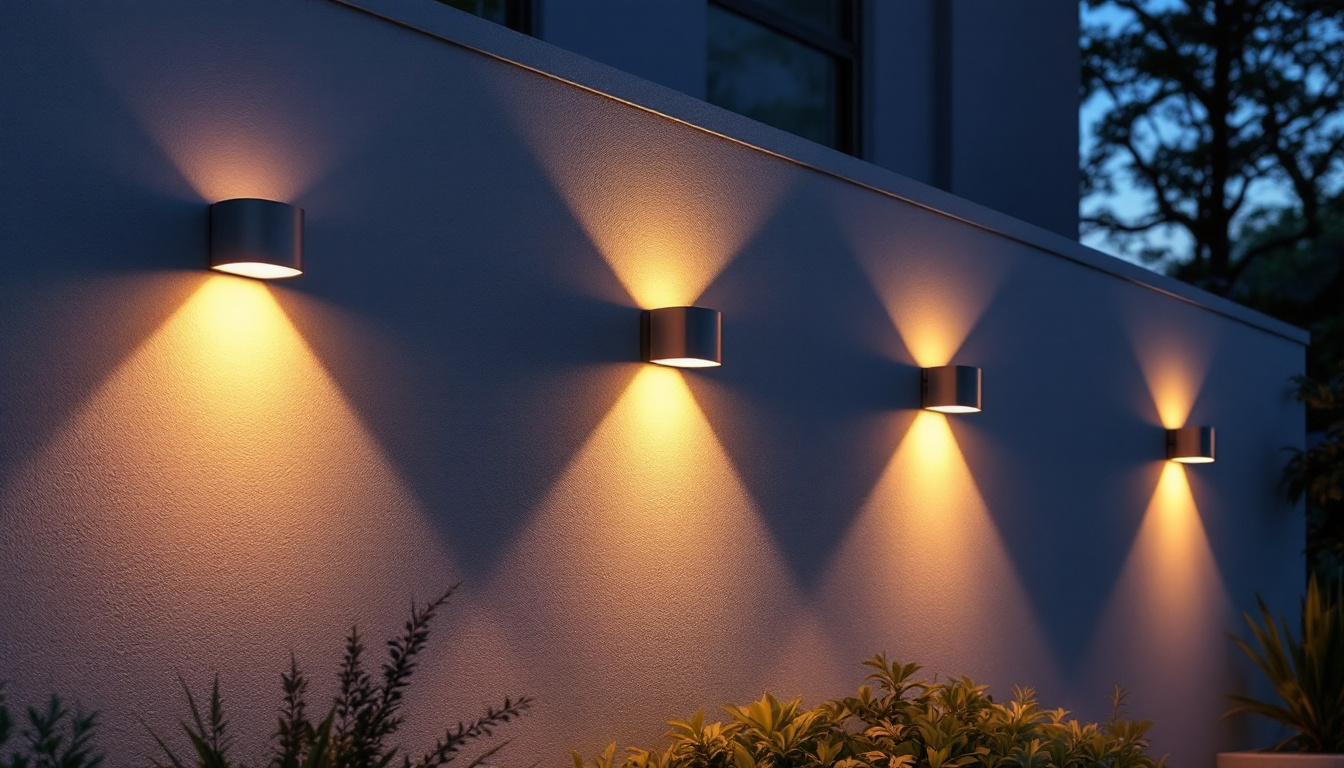
Motion detector lights have become an essential component in modern lighting design, particularly for outdoor spaces. For lighting contractors, understanding the intricacies of motion detector technology is crucial in providing clients with effective and efficient lighting solutions. This article delves into the various aspects of motion detector lights, including their types, installation considerations, and benefits, tailored specifically for lighting professionals.
At its core, a motion detector light is designed to illuminate an area when movement is detected. This technology is not only practical but also enhances security and energy efficiency. The fundamental principle behind these lights is the detection of motion through various sensors, which can be categorized into several types.
There are primarily three types of motion sensors used in lighting systems: passive infrared (PIR), microwave, and dual technology sensors. Each type has its own unique benefits and applications.
Motion detectors work by interpreting signals from their sensors. For PIR sensors, the detection occurs when a warm body moves across the sensor’s field of view, causing a change in infrared radiation levels. This change triggers the light to turn on. Microwave sensors, on the other hand, detect motion by measuring the time it takes for emitted microwave pulses to return after bouncing off an object.
Once motion is detected, the light can be programmed to remain on for a predetermined duration, which can usually be adjusted according to the user’s preferences. This feature not only enhances convenience but also contributes to energy savings.
In addition to their primary function of detecting motion, many modern motion detectors come equipped with advanced features such as ambient light sensors, which ensure that the lights only activate in low-light conditions. This capability prevents unnecessary illumination during daylight hours, further enhancing energy efficiency. Furthermore, some systems can be integrated with smart home technology, allowing users to control lighting remotely via smartphone apps or voice commands, creating a seamless and user-friendly experience.
Moreover, the applications of motion detector technology extend beyond residential use. In commercial settings, these devices can be employed to manage lighting in offices, warehouses, and retail spaces, optimizing energy consumption and improving safety. For instance, in a retail environment, strategically placed motion sensors can illuminate pathways for customers while conserving energy in less trafficked areas, demonstrating how motion detectors can be both functional and cost-effective in various contexts.
Installing motion detector lights requires careful planning and consideration to ensure optimal performance. Lighting contractors must take into account the environment, the intended use of the lighting, and the specific needs of the client.
The placement of motion detector lights is critical to their effectiveness. Ideally, these lights should be installed in areas where motion is likely to occur, such as driveways, walkways, and entrances. However, it is also essential to avoid placing them near objects that may cause false triggers, such as trees or bushes that may sway in the wind.
Additionally, the height at which the lights are installed can significantly impact their performance. Typically, mounting the lights at a height of 6 to 10 feet provides the best coverage while minimizing the chances of false alarms. Furthermore, considering the angle of the sensor is equally important; a downward tilt can help in detecting movement more accurately while avoiding unnecessary activation from passing cars or animals.
Another factor to consider is the surrounding landscape. If the property has features like fences, gates, or walls, these can obstruct the motion sensor’s field of view. Therefore, it is advisable to conduct a thorough site assessment to identify any potential obstructions and adjust the installation plan accordingly. This proactive approach can enhance the reliability of the lighting system and ensure that it serves its purpose effectively.
Motion detector lights can be hardwired or powered by batteries. Hardwired systems often provide more reliability and are better suited for permanent installations. When wiring, ensure that the circuit can handle the load of the lights and that all connections are secure to prevent any electrical issues.
For battery-operated models, it’s crucial to consider the battery life and the ease of replacement. Regular maintenance checks should be scheduled to ensure that the lights remain functional and effective. Additionally, opting for solar-powered motion detector lights can be an eco-friendly alternative, especially for outdoor installations. These systems harness energy from the sun, reducing electricity costs and providing a sustainable lighting solution.
When selecting a power supply option, it’s also important to evaluate the expected usage patterns. For instance, areas with high foot traffic may benefit from hardwired systems that can handle continuous use, while less frequented spaces might be adequately served by battery-operated or solar options. Understanding the specific requirements of each installation site will help in making informed decisions that enhance the longevity and efficiency of the lighting system.
Incorporating motion detector lights into a lighting design offers numerous advantages, making them a valuable addition for both contractors and clients. Understanding these benefits can help contractors better communicate their value to potential customers.
One of the primary benefits of motion detector lights is their ability to enhance security. By illuminating areas when movement is detected, these lights can deter potential intruders and provide peace of mind to homeowners and business owners alike. A well-lit exterior can significantly reduce the likelihood of break-ins and vandalism.
Furthermore, many motion detector lights come equipped with additional features such as cameras or alarms, further increasing the security level of a property. This integration can be an attractive selling point for clients looking to improve their home or business security.
Motion detector lights contribute to energy efficiency by ensuring that lights are only on when needed. This feature not only reduces energy consumption but also lowers electricity bills. For environmentally conscious clients, this aspect can be particularly appealing.
Additionally, many modern motion detector lights utilize LED technology, which is inherently more energy-efficient than traditional incandescent bulbs. This combination of motion detection and LED technology results in a significant reduction in energy usage.
Motion detector lights are versatile and can be utilized in various applications, making them suitable for a wide range of projects. Understanding these applications can help contractors identify opportunities for incorporating motion detector technology into their designs.
In residential settings, motion detector lights are commonly used for outdoor security. They can be installed around the perimeter of a home, including driveways, patios, and entryways. This not only enhances safety but also provides convenience for homeowners returning home at night.
Additionally, motion detector lights can be used in gardens or yards to highlight pathways or features, creating an inviting atmosphere while ensuring safety.
For commercial properties, motion detector lights play a crucial role in security and energy management. Retail stores, warehouses, and office buildings can benefit from strategically placed motion sensors to illuminate parking lots, entrances, and hallways.
Moreover, these lights can be integrated into larger building management systems, allowing for automated control and monitoring, further enhancing energy efficiency and security.
While motion detector lights offer numerous benefits, there are challenges that lighting contractors may encounter during installation and use. Being aware of these challenges and knowing how to address them can improve overall project success.
One of the most common issues with motion detector lights is false triggering. This can occur due to environmental factors such as wind, rain, or passing animals. To mitigate this, contractors should carefully consider the placement of sensors and adjust sensitivity settings as needed.
Additionally, selecting the right type of motion sensor for the specific environment can help reduce false alarms. For instance, using dual technology sensors in areas prone to movement from non-human sources can enhance accuracy.
Regular maintenance is essential to ensure that motion detector lights function correctly. Contractors should advise clients on the importance of keeping sensors clean and free from obstructions, as dirt or debris can hinder performance.
Furthermore, scheduled checks on battery-operated systems and ensuring hardwired systems are functioning properly can prevent unexpected failures and maintain the effectiveness of the lighting system.
The field of motion detector lighting is continually evolving, with new technologies and trends emerging regularly. Staying informed about these developments can provide contractors with a competitive edge in the market.
As smart home technology becomes increasingly popular, motion detector lights are being integrated into broader smart home systems. This allows for remote control and monitoring via smartphones or other devices, giving homeowners greater flexibility and control over their lighting.
Contractors should familiarize themselves with smart lighting products and systems to offer clients comprehensive solutions that meet modern demands.
Emerging sensor technologies, such as computer vision and AI-based systems, are set to revolutionize motion detection. These advanced systems can differentiate between types of movement, reducing false alarms and enhancing security.
Investing in knowledge about these technologies will enable contractors to offer cutting-edge solutions that align with the needs of tech-savvy clients.
Motion detector lights are an invaluable tool for lighting contractors, providing enhanced security, energy efficiency, and versatility in applications. By understanding the technology, installation considerations, benefits, and challenges associated with motion detector lights, contractors can better serve their clients and stay ahead in a competitive market.
As the industry continues to evolve, staying informed about the latest trends and technologies will ensure that lighting contractors remain at the forefront of innovation in motion detection lighting solutions.
Ready to enhance your lighting projects with the latest in motion detector technology? Look no further than LumenWholesale for a comprehensive selection of spec-grade lighting products. Our commitment to quality and affordability ensures that you can equip your installations with the best motion detector lights on the market, all at wholesale prices. Say goodbye to local distributor markups and hello to free shipping, making bulk purchases simpler and more cost-effective. Elevate your lighting solutions today by visiting LumenWholesale for the best value in wholesale lighting.

Illuminate your understanding of outside wall mount lights with this insightful article tailored for lighting contractors.

Discover how T8 4Ft LED bulbs are revolutionizing the lighting industry with their energy efficiency, longevity, and superior illumination.

Explore the impact of street light sales on lighting contractors’ profitability.

Discover the latest trends in dusk till dawn lighting that every lighting contractor needs to know.